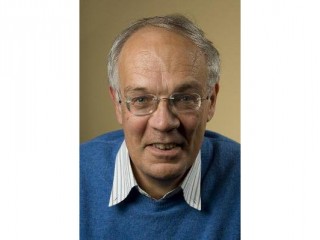
Bert Sakmann biography
Date of birth : 1942-06-12
Date of death : -
Birthplace : Stuttgart, Germany
Nationality : German
Category : Science and Technology
Last modified : 2011-09-21
Credited as : scientist, medical doctor, Nobel Prize for Physiology or Medicine
0 votes so far
From 1969 to 1970 Sakmann served as a research assistant in the department of neurophysiology at the Max Planck Institute for Psychiatry and then finished his postdoctoral studies in the department of biophysics at University College, London. After receiving his medical degree from the University of Göttingen in 1974, Sakmann joined the department of neurobiology at the Max Planck Institute for Biophysical Chemistry, where he shared laboratory space with Neher.
Working together, the two men used the patch-clamp technique to conclusively establish the existence of characteristic sets of ion channels in cell membranes-some of which permit the flow of only positive ions, while others pass only negatively charged ions. This established, they examined a broad range of cellular functions, eventually discovering the role that ion channels play in such diseases as diabetes, cystic fibrosis, epilepsy, several cardiovascular diseases, and certain neuromuscular disorders. These discoveries enabled the development of new and more specific drug therapies.
In 1979 Sakmann became a research associate in the Max Planck Institute's membrane biology group. He was made head of the membrane physiology unit in 1983, and he became director of the institute's department of cell physiology two years later. Sakmann and Neher cowrote Single-Channel Recording (1983; 2nd ed., 2005), a reference work covering a variety of techniques used to study membrane channels.
German physiologist Bert Sakmann won the Nobel Prize for Medicine in 1991, for describing "the function of single ion channels in cells." Working with Erwin Neher, his long-time collaborator and co-winner of Nobel honors, Sakmann invented the patch clamp, which allows observation of the minute electrical energy produced in cellular ion channels. His wife was a prominent pediatric ophthalmologist, and as Sakmann toiled in obscurity early in his career, he said he was sometimes better known as "the eye doctor's husband".
Awards:
Nobel Prize for Medicine 1991 (with Erwin Neher)
















